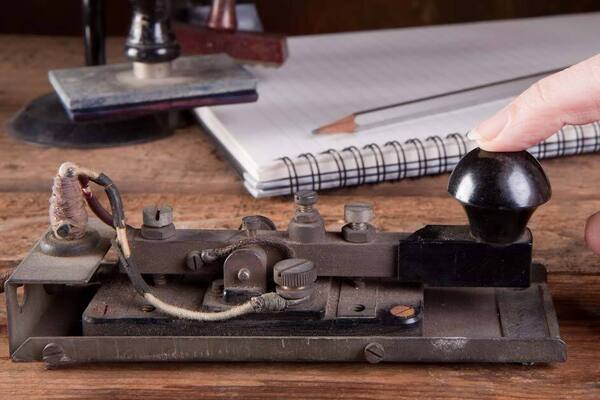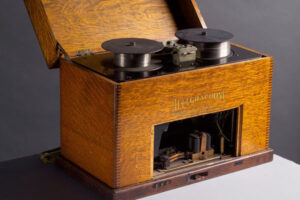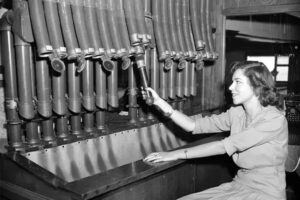In the world of telegraphic communication, Morse code stands as a timeless legacy. Developed by Samuel Morse, it served as a vital method of transmitting messages across long distances. This article aims to explore the historical significance and fading influence of Morse code, shedding light on its rich past and uncertain future.
Morse code, with its distinct sequence of dots and dashes, laid the foundation for efficient communication. It played a crucial role in many significant historical events, including emergency situations and military operations during wars. However, with the rapid advancement of technology, Morse code has experienced a decline in usage in recent years.
The purpose of this article is to delve into the intricacies of Morse code, uncovering its history and function. By understanding its encoding and decoding methods, we can appreciate the importance of timing and rhythm in transmitting and receiving Morse code signals.
As the usage of Morse code diminishes, it is essential to highlight its wide range of applications. From its use in the maritime and aviation industries to its role as a means of communication among amateur radio operators, Morse code has left an indelible mark on various sectors.
While alternative communication methods, such as texting and voice transmissions, have emerged, the decline of Morse code shouldn’t overshadow its significance. This article aims to recognize the challenges in learning and mastering Morse code, while also emphasizing the efforts being made to preserve and revive this unique form of communication.
Join us on this journey through time as we explore the fading legacy of Morse code, reflect on its historical significance, and encourage readers to delve into its mysteries.
Table of Contents
The History of Morse Code
One of the most significant developments in the world of telecommunications was the creation of Morse code. This ingenious method of transmitting messages, named after its inventor Samuel Morse, played a pivotal role in revolutionizing communication during the 19th and early 20th centuries. The implementation of the telegraph, a device invented by Morse and his partner Alfred Vail, allowed for the transmission of electrical signals over long distances, paving the way for the birth of Morse code.
Morse code itself was a system of representing letters, numbers, and punctuation marks using a combination of dots, dashes, and pauses. It was designed to be easily interpretable by telegraph operators across the globe. This coding language, with its simplicity and efficiency, became the backbone of telegraphic communication for decades. Its significance cannot be understated, as it played a crucial role in various historical events.
Throughout history, Morse code has been instrumental in transmitting critical information during times of crisis and war. For example, during World War II, Morse code acted as a lifeline for communication, allowing military personnel to transmit vital messages across long distances. The famous distress signal SOS, which consists of three short dots, three long dashes, and three short dots, is a universal Morse code distress call that has saved countless lives at sea.
Morse code has also been essential in the maritime industry, where it served as the primary means of communication between ships and shore. Telecommunications protocols like the International Code of Signals made extensive use of Morse code to ensure efficient maritime communication. Additionally, Morse code was widely adopted in aviation for its reliability and simplicity, enabling pilots to communicate with air traffic control and other aircraft in times of need.
While the usage of Morse code has declined significantly in recent years, with advancements in technology leading to alternative communication methods like texting and voice transmissions, it still holds historical and cultural significance. Efforts to preserve the legacy of Morse code are underway, with amateur radio clubs and organizations teaching the language as a hobby or educational activity. It is vital to recognize and appreciate Morse code as a form of communication that shaped the world we live in today.
In conclusion, the history of Morse code is intertwined with the development of telegraphy and the transmission of messages across long distances. Its creation by Samuel Morse and its adoption as the universal language of telegraphic communication revolutionized the way information was conveyed. From its involvement in critical moments of history to its usage in various industries, Morse code left an indelible mark that should not be forgotten. As we move forward in the digital age, it is essential to understand and appreciate the legacy of Morse code and the impact it had on society.
The Functioning of Morse Code
Morse code, a system of encoding and decoding messages using a combination of dots, dashes, and pauses, is a fascinating method of communication. The basics of Morse code involve associating each letter and number with a unique sequence of dots and dashes. For example, the letter “A” is represented by a dot followed by a dash, while the letter “B” is represented by a dash followed by three dots.
Differentiating between dots, dashes, and pauses is crucial in Morse code. A dot is a short signal, typically lasting about one unit of time, while a dash is a longer signal, usually lasting about three units of time. Pauses are used to separate letters and words, with inter-character pauses lasting about one unit of time and inter-word pauses lasting about three to seven units of time.
Timing and rhythm play an important role in both transmitting and receiving Morse code signals. The duration of each dot or dash, as well as the spacing between them, must be consistent to ensure accurate communication. Operators must develop a sense of timing to tap out the dots and dashes in precise intervals, while listeners need to pay close attention to the rhythm to decode the message accurately.
Morse code’s functioning has been instrumental in various industries, most notably in maritime and aviation. This system allowed sailors and pilots to communicate over long distances when other forms of communication were impractical. Additionally, during times of war and emergencies, Morse code played a crucial role in relaying important messages and saving lives. Even today, amateur radio operators continue to use Morse code as a unique form of communication among themselves.
In recent years, however, with the advent of more advanced technology, the usage of Morse code has seen a decline. Alternative methods of communication, such as texting and voice transmissions, have replaced Morse code in many scenarios. Furthermore, the challenge of learning and mastering Morse code has deterred many individuals from pursuing it as a means of communication.
Despite its diminishing usage, efforts are being made to preserve the legacy of Morse code. Amateur radio clubs and organizations continue to promote and teach Morse code as a hobby or educational activity. Recognizing the historical significance of Morse code as a pioneering form of communication, it is important to keep its legacy alive.
In conclusion, understanding the functioning of Morse code involves grasping its basics, differentiating between dots, dashes, and pauses, and appreciating the importance of timing and rhythm. This unique method of communication has played a significant role in various industries and historical events. Although its usage has declined in recent years, preserving the legacy of Morse code is crucial in honoring its historical significance and allowing future generations to learn about this important aspect of telegraphic communication.
Usage and Impact of Morse Code
Morse code has been extensively utilized in various industries, particularly in the maritime and aviation sectors. Its simplicity and reliability have made it an ideal form of communication for transmitting messages across long distances, especially when other means of communication are not readily available. In maritime settings, Morse code was widely used by sailors to communicate vital information such as distress signals or navigational coordinates. Similarly, in aviation, Morse code was integral to the communication between aircraft and ground control, allowing for efficient coordination and ensuring the safety of flights.
During times of war and emergencies, Morse code played a crucial role in relaying vital information. Its ability to be transmitted through various mediums, including radio waves and visual signals, made it an essential tool for military communication. Messages encoded in Morse code could be transmitted over long distances with relative ease and minimal risk of interception, making it a preferred method of communication during times when secrecy was paramount. Furthermore, Morse code was critical in emergency situations, allowing individuals to quickly send distress signals and request assistance.
Beyond its application in professional settings, Morse code has also served as a language for communication among amateur radio operators. These enthusiasts, often referred to as “hams,” use Morse code as a means of communication and a way to connect with others around the world. Amateur radio operators have used Morse code to engage in conversations, exchange information, and participate in contests.
Despite its declining usage in recent years due to advancements in technology, Morse code continues to hold historical and cultural significance. It is a testament to the ingenuity of Samuel Morse and his contributions to telegraphic communication. Preserving the knowledge and appreciation of Morse code ensures that this legacy of communication is not forgotten. Whether as a hobby or an educational activity, learning Morse code can provide valuable insights into the history of communication and the critical role it has played in various industries and contexts. By recognizing and appreciating Morse code’s impact, we can ensure that its legacy remains alive for generations to come.
The Decline of Morse Code
With the rapid advancements in technology over the years, the usage of Morse code has significantly declined. The introduction of alternative communication methods, such as texting and voice transmissions, has played a major role in this decline. These modern methods offer a faster, more efficient way of communicating, making Morse code seem archaic in comparison.
Learning and mastering Morse code can also present challenges, further contributing to its declining usage. The complex nature of the code, with its combination of dots, dashes, and pauses, requires a significant amount of time and dedication to learn and become proficient in. As a result, many individuals find it easier to rely on more accessible and user-friendly communication methods.
Despite its decline, Morse code still holds a significant place in history and continues to be recognized as a fundamental form of communication. It played a crucial role in various industries, such as maritime and aviation, where its simplicity and reliability were highly valued. Moreover, in times of war and emergencies, Morse code was instrumental in encoding and transmitting vital messages.
Efforts have been made to preserve the legacy of Morse code in the face of its declining usage. Amateur radio clubs and organizations continue to promote and teach Morse code as a hobby or educational activity. By doing so, they hope to keep alive the knowledge and appreciation of this historical form of communication.
In conclusion, while the usage of Morse code has diminished in recent years, it still holds immense historical and cultural significance. Its decline can be attributed to advancements in technology, the introduction of alternative communication methods, and the challenges associated with learning and mastering the code. Despite this, the efforts to preserve Morse code and its legacy remind us of its lasting impact on telegraphic communication. It is important for individuals to learn about and appreciate Morse code as a significant part of our communication history.
Preserving the Legacy of Morse Code
Morse code, once a vital method of communication, has seen a decline in usage over the years. However, efforts are being made to keep this historical form of communication alive and preserve its legacy.
Amateur radio clubs and organizations play a significant role in preserving Morse code. These groups provide a platform for enthusiasts to come together, share their knowledge, and practice Morse code. They often organize events and competitions, allowing individuals to showcase their skills and keep the Morse code community thriving.
Teaching Morse code has also become a popular hobby and educational activity. Many organizations offer classes and workshops where people can learn Morse code from experienced instructors. These classes range from basic introductions to advanced training courses, enabling individuals to develop their Morse code proficiency at their own pace.
It is important to recognize and appreciate Morse code as more than just a historical form of communication. By understanding its significance, we can gain a deeper appreciation for the ingenuity and craftsmanship behind its creation. Morse code served as a foundation for many communication technologies that we use today, and it is important to acknowledge its impact.
Preserving the legacy of Morse code is crucial, as it allows us to remember and honor the pioneers who contributed to the development of telegraphic communication. By learning Morse code and passing on this knowledge to future generations, we can ensure that this unique and important form of communication is not forgotten.
In conclusion, while Morse code may no longer be widely used, it still holds immense value as a historical form of communication. Various efforts, such as amateur radio clubs, teaching initiatives, and recognition of its significance, are being made to preserve its legacy. By engaging in these activities, we can keep the spirit of Morse code alive and ensure that future generations appreciate its importance in shaping the way we communicate today.
Conclusion
In conclusion, Morse code holds great significance and impact in the realm of telegraphic communication. Developed by Samuel Morse, it served as a revolutionary method to transmit messages over long distances. Throughout history, Morse code played crucial roles in significant events, showcasing its indispensability.
However, in recent years, its usage has been declining. Technological advancements have brought about alternative communication methods such as texting and voice transmissions, leading to the diminishing use of Morse code. Learning and mastering Morse code also present challenges, deterring individuals from embracing this historical form of communication.
Despite this decline, it is crucial to preserve the legacy of Morse code. Efforts by amateur radio clubs and organizations aim to keep Morse code alive, recognizing its historical significance. Teaching Morse code as a hobby or educational activity can further contribute to its preservation, ensuring that future generations have the opportunity to learn about this crucial form of communication.
In conclusion, Morse code played a vital role in telegraphic communication. Although it may no longer be widely used, its legacy should still be appreciated and understood. Therefore, it is highly encouraged for readers to explore the history and significance of Morse code, as it is an integral part of our technological evolution and cultural heritage.




